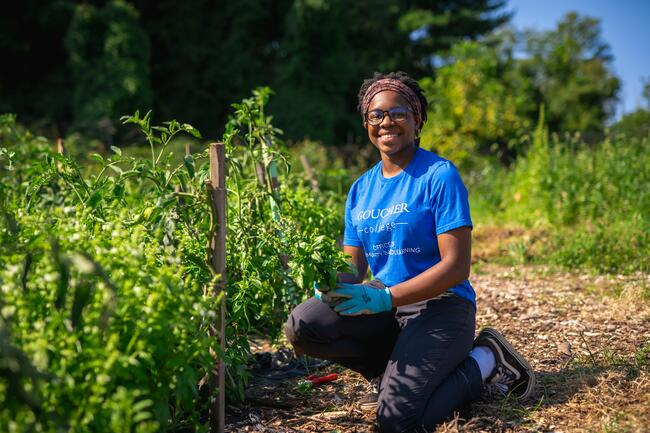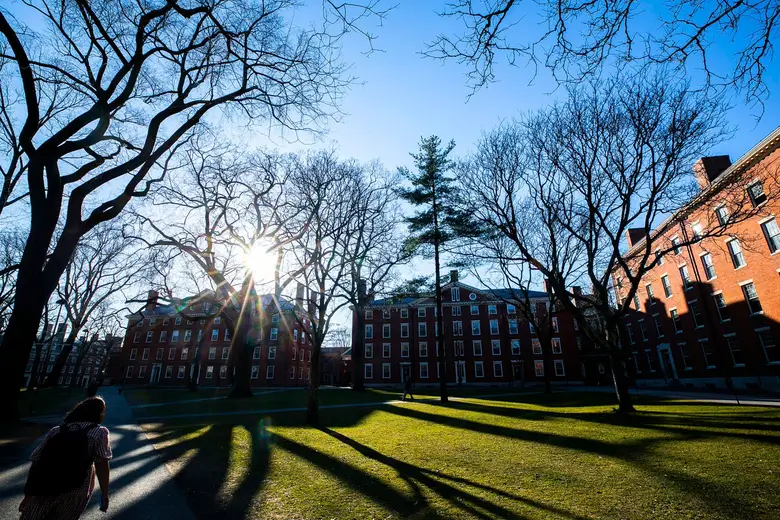
In today’s higher education landscape, a growing number of undergraduates juggle coursework with childcare responsibilities. These individuals, often navigating solo parenthood, face unique obstacles that test their determination. Yet, many persist, driven by the promise of better futures for themselves and their children.
The Growing Presence of Parents on Campus
More than one in five undergraduates today are raising children while pursuing degrees. This represents about 3.8 million students across the nation. Among them, a significant portion are mothers handling parenthood without partners.
Enrollment trends show a sharp increase in this demographic over recent decades. Between 2000 and 2012, the number of solo mother students more than doubled. This surge reflects broader societal shifts, including changing family structures and economic pressures.
Demographics reveal disparities across racial lines. Black women in college are particularly likely to be parenting alone, comprising a large share of this group. Similar patterns appear among Native American and Pacific Islander students.
As an author who’s interviewed numerous educators, I’ve seen how these statistics play out in real lives. One community college administrator shared stories of classrooms filled with determined parents. Their presence enriches discussions but also highlights systemic gaps.
Age factors into this equation too. Most of these undergraduates are in their thirties, bringing maturity but also added life complexities. Younger ones, in their twenties, often struggle more with balancing new parenthood and studies.
Financial Pressures Weighing Heavy
Money troubles top the list of hurdles for these undergraduates. Many live below poverty lines, with incomes barely covering basics. Childcare alone can devour a substantial portion of their budgets.
Student loans compound the issue. Those parenting solo borrow more on average than peers without kids. Debt levels often exceed $30,000 upon graduation, creating long-term burdens.
Work demands add another layer. Over 40 percent hold full-time jobs alongside classes. This juggling act leaves little time for studying or family, leading to higher stress levels.
In my own circle, a friend who raised her son while earning a nursing degree comes to mind. She worked nights at a diner, scraping by on tips. Her story mirrors countless others facing similar squeezes.
Unmet financial needs persist despite aid. On average, these students face over $6,000 in gaps after grants and contributions. This shortfall forces tough choices, like cutting back on essentials.
Food insecurity affects more than half. Surveys show 53 percent worry about meals, linking directly to financial strains. Such instability hampers academic focus and performance.
Childcare Costs as a Major Barrier
Quality childcare remains elusive for many. Monthly expenses can reach $500 or more per child. Without subsidies, this expense derails educational plans.
Campus-based options help some, but availability is limited. Waiting lists stretch long, leaving parents scrambling for alternatives. Off-campus providers often prove even pricier.
Flexible scheduling becomes crucial. Evening classes might align with work, but finding nighttime care proves challenging. This mismatch contributes to higher dropout rates.
I’ve witnessed this firsthand through volunteer work at a local university’s family center. Parents shared tales of piecing together care from relatives and friends. Exhaustion was a common theme in their narratives.
Housing Instability on Campus
Safe, affordable places to live elude many of these students. High rents in college towns exacerbate the problem. Some face homelessness, sleeping in cars or couch-surfing.
Campus housing often excludes families. Dorms cater to singles, leaving parents to seek off-campus options. These can cost more than tuition in some areas.
Eviction threats loom large. Financial hardships lead to missed payments, disrupting lives. For parents, this instability affects children’s well-being too.
One educator I spoke with described students sharing single-family homes to cut costs. While practical, it creates crowded, distracting environments. Privacy becomes a luxury.
Geographic factors play a role. Urban areas like Los Angeles see students splitting rentals near campuses. Rural settings offer fewer choices, forcing longer commutes.
Personal reflection: During my reporting days, I covered a story about a mother-student evicted mid-semester. She nearly quit school but found temporary campus aid. Her resilience stuck with me.
Homelessness Among Student Parents
Statistics paint a grim picture: 17 percent experience homelessness. This rate climbs higher for those parenting alone. Basic needs go unmet, derailing academic progress.
Colleges sometimes overlook this crisis. Limited emergency housing exists, but demand outstrips supply. Students hide their situations due to stigma.
Children suffer collateral damage. Unstable living disrupts routines and schooling. Parents grapple with guilt alongside survival.
In conversations with affected individuals, themes of isolation emerge. Support networks prove vital, yet hard to build amid chaos. Community resources offer partial relief.
Support Systems Making a Difference
Federal grants like Pell provide foundational aid. These need-based funds help cover tuition for low-income parents. However, they rarely stretch to living expenses.
Specialized scholarships target this group. Organizations offer awards for single mothers, easing financial loads. Mentoring often accompanies these, boosting retention.
Campus programs shine in some institutions. Family-friendly housing units allow parents to live on-site with kids. Childcare centers subsidize costs for enrolled students.
As someone who’s advocated for education equity, I’ve seen these initiatives transform lives. A small grant can mean the difference between dropping out and graduating.
State-level efforts vary. Some provide holistic case management, linking parents to resources. Others focus on career counseling tailored to family needs.
Private foundations step in too. Grants fund innovative supports, like emergency funds for unexpected expenses. These safety nets prevent minor setbacks from becoming major crises.
Innovative Programs Across Campuses
Wilson College’s scholar initiative stands out. It offers year-round housing for parents and young children. Ages range from toddlers to preteens, creating a supportive community.
Community colleges lead in accessibility. Many integrate wellness programs addressing mental health alongside finances. Resilience training helps parents cope.
Partnerships with local agencies extend reach. Food pantries and clothing drives alleviate daily pressures. Transportation vouchers ease commuting burdens.
From my experiences visiting campuses, these collaborations foster belonging. Students feel seen, not sidelined. Success rates climb as a result.
Strategies for Overcoming Obstacles
Budgeting skills prove essential. Many learn to track expenses meticulously, prioritizing needs. Apps and workshops aid in this process.
Part-time gigs offer flexibility. Remote work allows studying during naps or after bedtime. Gig economy jobs fit irregular schedules.
Community support networks build resilience. Parent groups on campus share tips and babysitting. Online forums connect those in similar situations.
I recall a single father I met who bartered services for childcare. He tutored in exchange for watching his daughter. Creativity became his survival tool.
Advocacy plays a key role. Students push for policy changes, like extended library hours. Their voices drive institutional improvements.
Time management techniques evolve. Block scheduling allocates slots for classes, work, and family. Prioritizing self-care prevents burnout.
Leveraging Financial Aid Effectively
FAFSA completion opens doors. Accurate filing maximizes grants and work-study opportunities. Counselors guide through complexities.
Tax benefits provide relief. Credits for childcare and education reduce burdens. Awareness of these can save thousands annually.
Emergency funds act as buffers. Some campuses offer micro-grants for crises. Building personal savings, even small, adds security.
In my writing career, I’ve profiled parents who maximized every resource. Their savvy approaches turned potential defeats into victories.
Health and Well-Being Impacts
Stress takes a toll on mental health. Anxiety rates soar among this group, linked to constant juggling. Access to counseling proves crucial.
Physical health suffers too. Irregular meals and sleep lead to issues. Wellness programs target these vulnerabilities.
Children benefit from stable parents. When supports align, families thrive holistically. Positive outcomes ripple outward.
Personal anecdote: A cousin of mine, a solo parent in grad school, battled depression. Campus therapy turned things around. Her story underscores the need for integrated care.
Social isolation compounds problems. Building connections combats loneliness. Events for family students foster community.
Long-term, resilience grows. Overcoming these challenges builds grit, valuable in careers and life.
Success Stories Inspiring Change
Kimberly Salazar’s journey highlights potential. A first-gen student with a young child, she maintained a high GPA. Her honors program acceptance defied odds.
Many graduate against the odds. Twenty-eight percent earn degrees within six years. Their achievements challenge stereotypes.
Alumni often give back. Mentoring programs pair veterans with newcomers. Shared experiences guide navigation.
I’ve interviewed graduates who credit persistence for career boosts. One became a social worker, aiding similar families. Cycles of support emerge.
Economic gains follow. Associate degrees reduce poverty risks significantly. Bachelor’s amplify this effect threefold.
Multigenerational benefits accrue. Children of graduates pursue higher education more often. Breaking poverty cycles becomes reality.
Policy Recommendations for Broader Impact
Expanding childcare subsidies tops agendas. Federal programs like CCAMPIS need more funding. Increased slots directly aid enrollment.
Housing grants could transform access. Dedicated family units on campuses reduce instability. Partnerships with communities expand options.
Data collection improves targeting. Tracking parent students informs policies. Better metrics drive effective interventions.
From my advocacy lens, these changes seem overdue. Voices from the ground must shape reforms for authenticity.
The Road Ahead for Parent Learners
Innovation continues to emerge. Online programs offer flexibility for busy schedules. Hybrid models blend convenience with interaction.
Employer partnerships provide internships accommodating families. These bridge education to stable jobs seamlessly.
Cultural shifts normalize this path. Campuses embracing diversity include parent perspectives. Inclusivity fosters success.
Reflecting on stories shared, hope prevails. Challenges persist, but determination wins. Futures brighten with each degree earned.
Society gains from invested parents. Skilled graduates contribute economically and socially. Investment yields widespread returns.
As barriers fall, more will thrive. Collective efforts pave smoother paths. The narrative evolves toward empowerment and achievement.
Ultimately, these students embody perseverance. Their journeys inspire broader conversations on equity. Progress builds on their foundations.
Looking forward, expanded supports promise transformation. Lives change, families strengthen. Education’s true potential unfolds.
| Statistic | Value | Source |
|---|---|---|
| Percentage of Undergraduates Who Are Parents | 22% | IWPR |
| Single Mothers in College | 1.7 million | National Postsecondary Student Aid Study |
| Food Insecurity Rate | 53% | Lumina Foundation |
| Homelessness Rate | 17% | Parenting While In College Report |
Tables like this underscore the scale of issues. Numbers humanize the struggle, urging action. Awareness sparks change.
X posts reveal raw experiences. One student shared moving back with parents due to rent hikes. Another highlighted debt from family obligations.
These voices amplify the narrative. Social media connects isolated individuals. Shared stories build solidarity.
In wrapping thoughts, the resilience shines through. Challenges test limits, but triumphs redefine possibilities. The pursuit continues, fueled by love and ambition.




